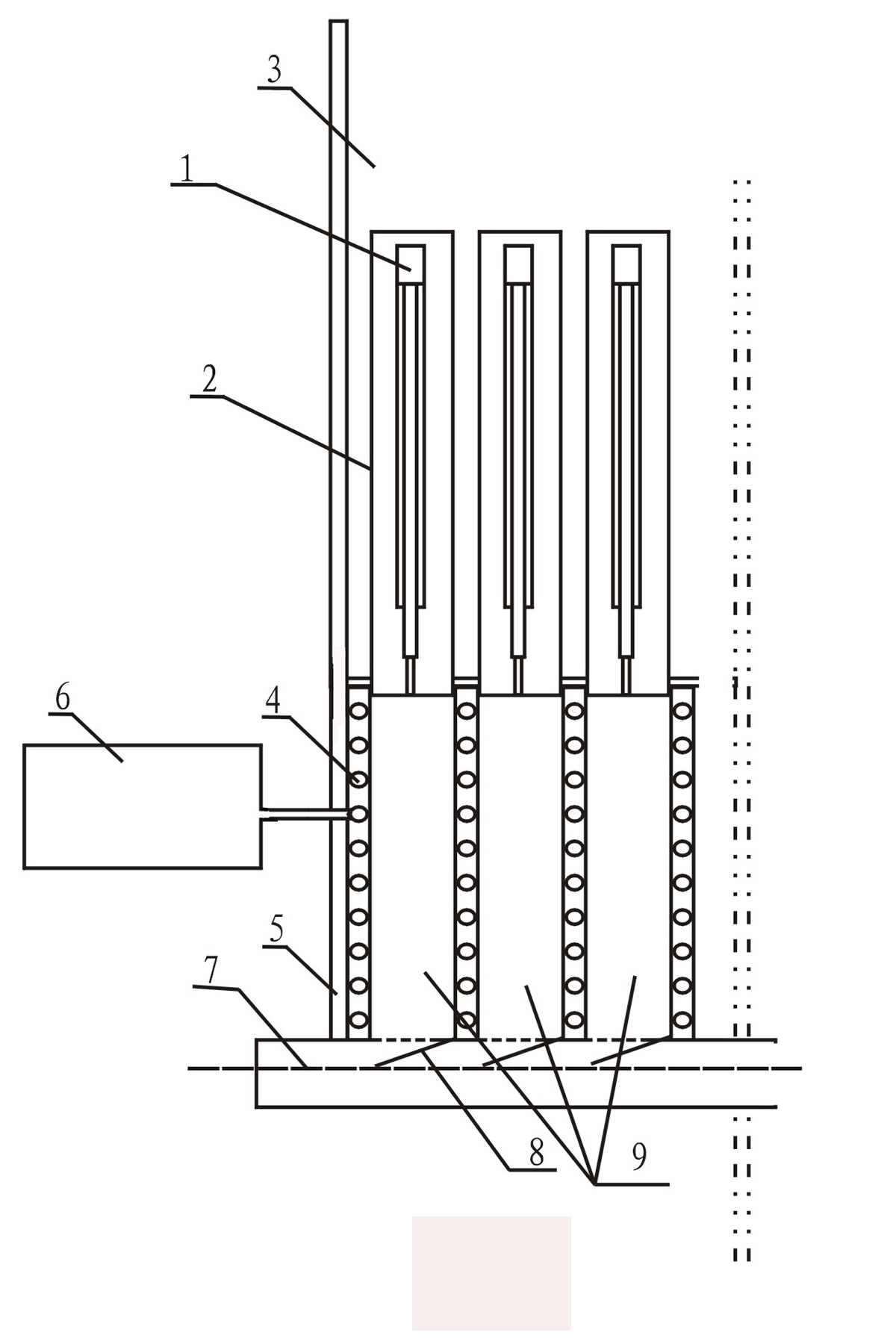Household garbage treatment method and device
A technology of domestic waste and treatment method, which is applied in the method of disinfection or sterilization of waste, biofuel, waste fuel, etc., can solve the problems of leachate contamination of sanitary landfill groundwater, difficult discharge of sewage, and atmospheric pollution.
- Summary
- Abstract
- Description
- Claims
- Application Information
AI Technical Summary
Problems solved by technology
Method used
Image
Examples
Embodiment 1
[0027] A method for disposing of domestic waste, comprising the steps of:
[0028] (1) Magnetic separation: use magnetic separation equipment to conduct magnetic separation of household garbage, and remove iron objects from household garbage;
[0029] (2) High-temperature drying and sterilization: send the garbage after magnetic separation into a high-temperature drying and sterilization device at 80-200°C for high-temperature drying and sterilization;
[0030] (3) Add chemical additives: add the following dry powder chemical additives in parts by weight to the dried and sterilized garbage;
[0031] Potassium perchlorate 9 Sodium hydroxide 5
[0032] Ferric oxide 6 Silicon oxide 3
[0033] Aluminum Oxide 3 Zinc Oxide 1
[0034] Calcium Oxide 0.5 Aluminum Chloride Anhydrous 8
[0035] Barium chloride 0.5 Waste lubricating oil 2
[0036] Described potassium perchlorate, waste lubricating oil are calculated by total amount, and others are calculated by weight ratio of rubber...
Embodiment 2
[0042] According to the steps of Example 1, the difference is that the dry powder chemical additives described in step (3) are calculated in parts by weight:
[0043] Potassium permanganate 9 Sodium hydroxide 3
[0044] Ferric oxide 7 Silicon oxide 4
[0045] Aluminum oxide 5 Zinc oxide 0.6
[0046] Calcium Oxide 0.8 Aluminum Chloride Anhydrous 6
[0047] Barium chloride 0.8 Waste lubricating oil 2
[0048] The potassium permanganate and waste lubricating oil are calculated by the total amount, and others are calculated by the weight ratio of rubber, plastic and nylon in the garbage.
[0049] The garbage charcoal produced by this method is tested: the average toxic equivalent of dioxins produced during combustion is 0.06ngTEQ / m3, meeting the limit requirements in the "Pollution Control Standards for Domestic Waste Incineration" (GB / T 18485-2001) (1.0 ngTEQ / m3). The burning calorie of garbage charcoal is 2480 calories / kg, and the residue after burning meets the requirement...
PUM
 Login to View More
Login to View More Abstract
Description
Claims
Application Information
 Login to View More
Login to View More - R&D
- Intellectual Property
- Life Sciences
- Materials
- Tech Scout
- Unparalleled Data Quality
- Higher Quality Content
- 60% Fewer Hallucinations
Browse by: Latest US Patents, China's latest patents, Technical Efficacy Thesaurus, Application Domain, Technology Topic, Popular Technical Reports.
© 2025 PatSnap. All rights reserved.Legal|Privacy policy|Modern Slavery Act Transparency Statement|Sitemap|About US| Contact US: help@patsnap.com



